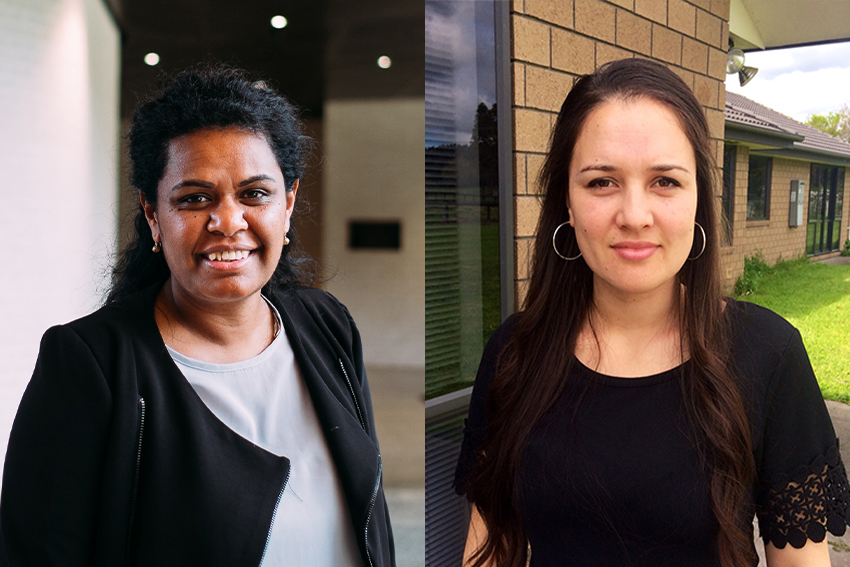Using ‘food havens’ to reduce obesity

A new concept in food environments, the food haven, aims to reduce high obesity rates among Māori and Pacific peoples.
- Researchers at the AUT Child and Youth Health Research Centre are proposing a new term, the food haven, defined as ‘a space (Vā) or place (papakāinga) where people have high availability of healthy food that is culturally accessible, convenient, affordable and desirable’.
- This new concept aims to challenge negative perceptions of people living in low socioeconomic neighbourhoods by highlighting good work already being done in the community to tackle obesity, and empowering these communities to define and drive positive change for themselves with the support of local business and government.
- A strength-based approach, that incorporates indigenous knowledge and models ‘what urgently needs to be done’, would be a more empowering and effective way to reduce obesity among New Zealand’s most vulnerable groups, according to a new AUT study.
- The findings of the study, Food havens, not food swamps: A strength-based approach to sustainable food environments, were published in the journal Health Promotion International.
Too many people are overweight and eat unhealthy food. And it’s a problem that falls disproportionately on those living in low socioeconomic areas that are negatively impacted by food deserts (with little access to healthy food and options limited to cheaper, less nutritious, high-calorie food) and food swamps (with an overabundance of fast food). Young people are among those most affected by harmful food environments.
The New Zealand Health Survey shows that one in 10 children are obese and the prevalence of obesity differs by ethnicity, with Pacific peoples (29 percent) and Māori (13 percent) being the highest.
Children living in the most deprived neighbourhoods are 2.7 times more likely to be obese, compared to those living in the most affluent areas.
Food environments shape what food we buy and eat. They are the physical, social, economic, political and cultural factors that impact the accessibility, availability and adequacy of food within a community.
In order to understand what constitutes a sustainable food environment and, more importantly, what that might look like for people living in New Zealand’s most deprived neighbourhoods, AUT researchers conducted a literature review focusing on the typology (types and symbolism) of food environments.
The lead author of the study, Daysha Tonumaipe’a (Te Arawa, Tainui, Ngāti Hine), a PhD candidate in International Business Strategy and Entrepreneurship at the AUT Business School and member of the AUT Child and Youth Health Research Centre, looks at indigenous experiences of international investment and is involved in several health research projects about sustainable food systems and food environments.
Tonumaipe’a says, there has been little to no success in reversing the obesity epidemic and a new approach is needed.
“The literature has tended to focus on harmful food environments using negative metaphors, like food deserts and food swamps, but positive motifs can go further in creating whole sustainable food environments,” she says.
“We need to focus on modelling healthy food environments and consider the complexities within distinct population groups.”
Key elements from the food haven definition have been drawn from indigenous knowledge, particularly Māori and Pacific perspectives.
- For Pacific peoples, space (Vā) refers to a space that is deeply relational – that carries with it a collective responsibility, duty and care that can allow a healthy food environment to prosper and provide positive outcomes for all members of the community.
- In Te Ao Māori, place (papakāinga) is defined as a home base, village or communal land. It is a place where activities are purposeful in enhancing the spiritual, social, cultural and economic wellbeing of individuals as well as the group in order to sustain the community.
Tonumaipe’a says, with traditional food environments there was always a central place where Māori could attain wellbeing through cultural, spiritual, and environmental means.
“The food haven incorporates a sense of hospitality and looks at how we used to eat. It is less about telling Māori and Pacific people ‘this is what you ought to eat’ and more about putting ownership back on our people – because we have our own solutions to these problems and can tap into indigenous ways of being and thinking to enhance our wellbeing,” she says.
“What we’re talking about is a journey of wellbeing, not an overnight fix.”
Research co-author, Dr Radilaite Cammock (Vuita, Fiji), is a lecturer in Public Health at the AUT School of Public Health and Interdisciplinary Studies. She is also a research associate at the AUT Child and Youth Health Research Centre and AUT Pacific Health Research Centre, based at the South Campus in Manukau.
Both researchers are proud citizens of South Auckland.
“A lot of people come to South Auckland and tell us what our food environment looks like, but not a lot of people care about what we are already doing to improve the spaces and places where we live. And most of the things we are doing are not being captured or supported by the public sector,” says Cammock.
The food haven concept is about capturing positive change that is happening in the community and trying to attract the support of people who are making decisions about where resources are going.
“We need academics, local business and government to consider the food haven concept and come up with solutions, with our community driving it. Our hope is that this concept will start that conversation and bring people together to look at all of the elements that influence the way people eat,” says Cammock.